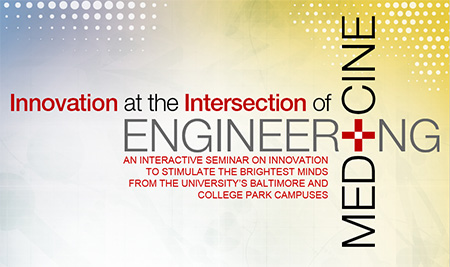Innovation at the Intersection of Medicine and Engineering

University of Maryland BioPark Life Sciences Conference Center
801 West Baltimore Street Baltimore, MD 21201
[Street parking as well as parking in a garage across the street is available. The venue is a short walk, across MLK Blvd, from the Medical, Dental, Nursing and Pharmacy schools]
Thursday, October 24, 2013 5:30 PM
LECTURE: Case Studies in Disruptive Innovation for Lowering Healthcare Costs
UM Ventures and the Maryland Innovation Initiative are pleased to announce the fifth talk in the ongoing Seminar series "Innovation at the Intersection of Medicine and Engineering."
The goal of the series is to stimulate conversations and interactions between engineers and health care faculty and students and this talk will be a perfect example of how we can do that. The Maryland Innovation Initiative (MII) is eager to solicit new ideas, new inventions, new procedures, new software and new collaborations on topics at the intersection of engineering and medicine and provides funding to demonstrate "proof of principle," with the hope that this can lead to start-ups or licensing opportunities that can ultimately help to improve care of our patients.
SPEAKER: Govind Rao, PhD Professor and Director, Center for Advanced Sensor Technology, UMBC
Govind Rao’s research has focused on applications of fluorescence spectroscopy to bioprocess engineering. His lab has developed next-generation sensors for low-cost non-invasive monitoring of oxygen, pH and pCO2 in bioreactors as well as novel sensors for glucose and glutamine. These sensors have led to a paradigm shift in bioprocess technology, as they collectively enable High Throughput Bioprocessing. In addition, the Rao lab has focused on developing novel applications of Green Fluorescent Protein in Bioprocessing. Its unique fluorescent properties and ease of use in a variety of culture systems have provided new insights into heterologous protein production. Recently, the Rao lab has started developing the next generation of sensors based on surface plasmon coupled fluorescence. These promise to lead to ultra-sensitive and ultra-fast sensors but at low-cost.